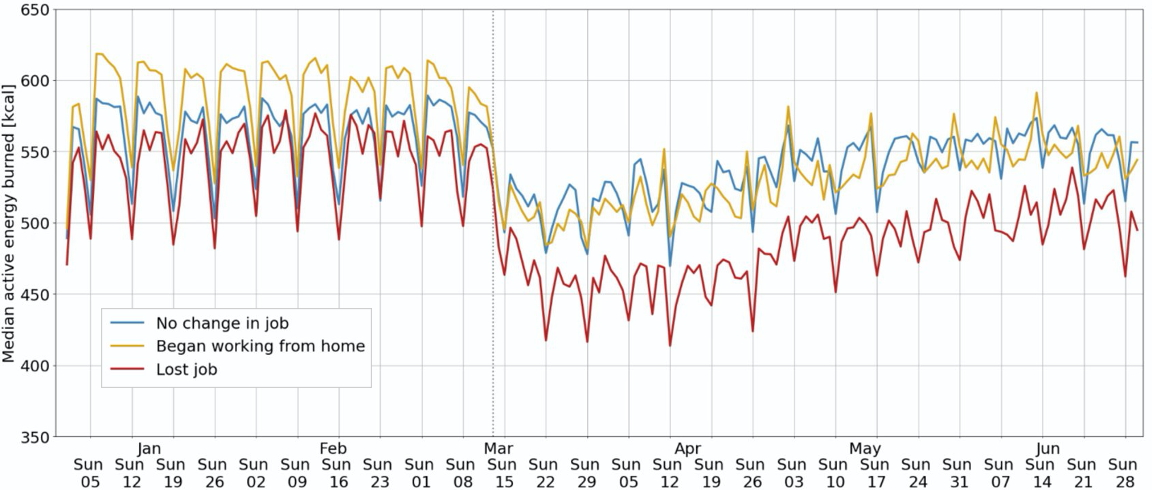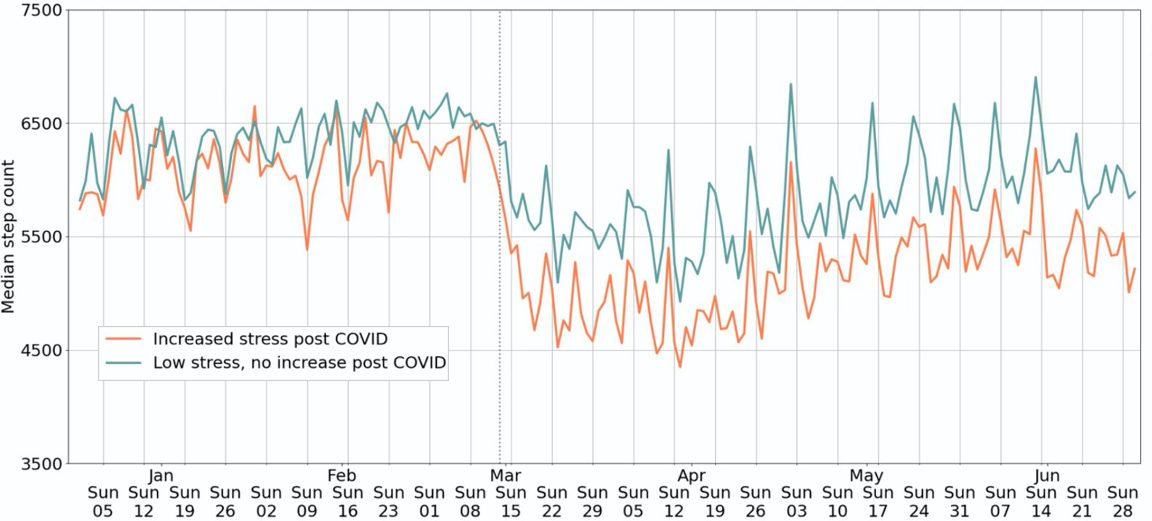How are exercise, cardiovascular health, stress, and general wellbeing related? We know that physical exercise reduces stress and, together, increased activity and lower stress are associated with beneficial long-term health outcomes. This knowledge has shaped general guidelines on living an active, healthy lifestyle, yet the mechanisms explaining these relationships are not entirely clear.
Everyday devices like the iPhone and Apple Watch can allow research studies to be conducted across a large population, by making it easy for users to participate from the comfort of their own home and voluntarily contribute relevant health research data. By capturing changes in stress, activity, and physiologic measures, over an extended period, it may be possible to define how and why these factors are so strongly related to each other. To truly understand these phenomena, we also need to know how individuals respond to shared challenges; the COVID-19 pandemic and associated changes in people’s personal and professional lives allow us to look at similarities and differences in responses to the same event across a population.
As one of our first efforts to understand the data in Apple Heart & Movement Study (AH&MS), we looked at how activity in general, and exercise in particular, changed in the context of the COVID-19 national emergency declaration on March 13th.
A few questions we asked to start analyzing this unique data set:
- How did major changes in job status or work location impact activity levels, assessed by active energy burned, across the study population?
- How did individuals who reported a marked increase in stress after mid-March compare in activity, assessed by step count, to those who remained at low stress levels?


